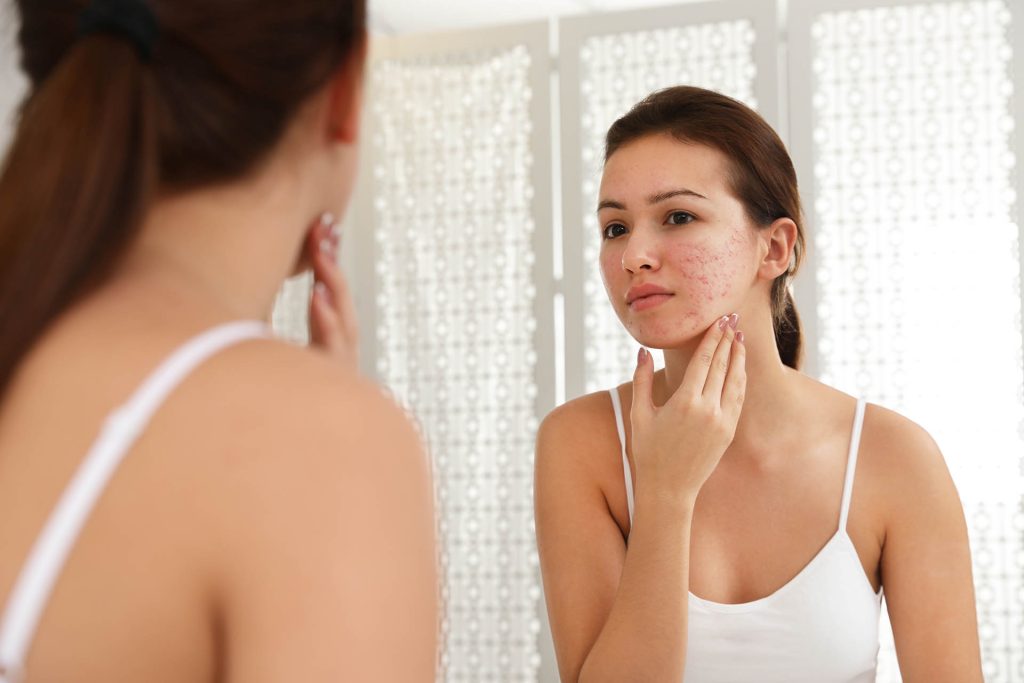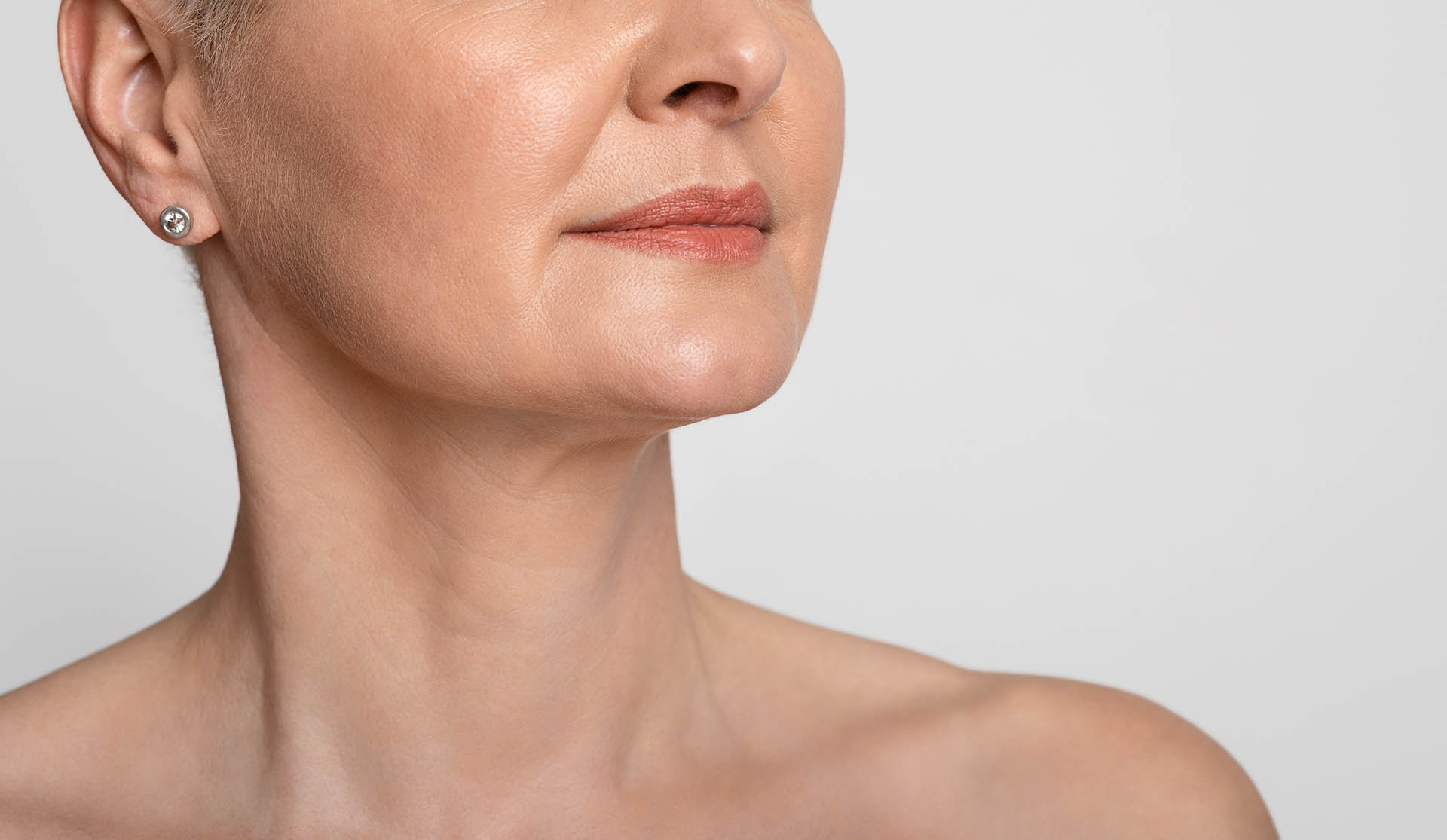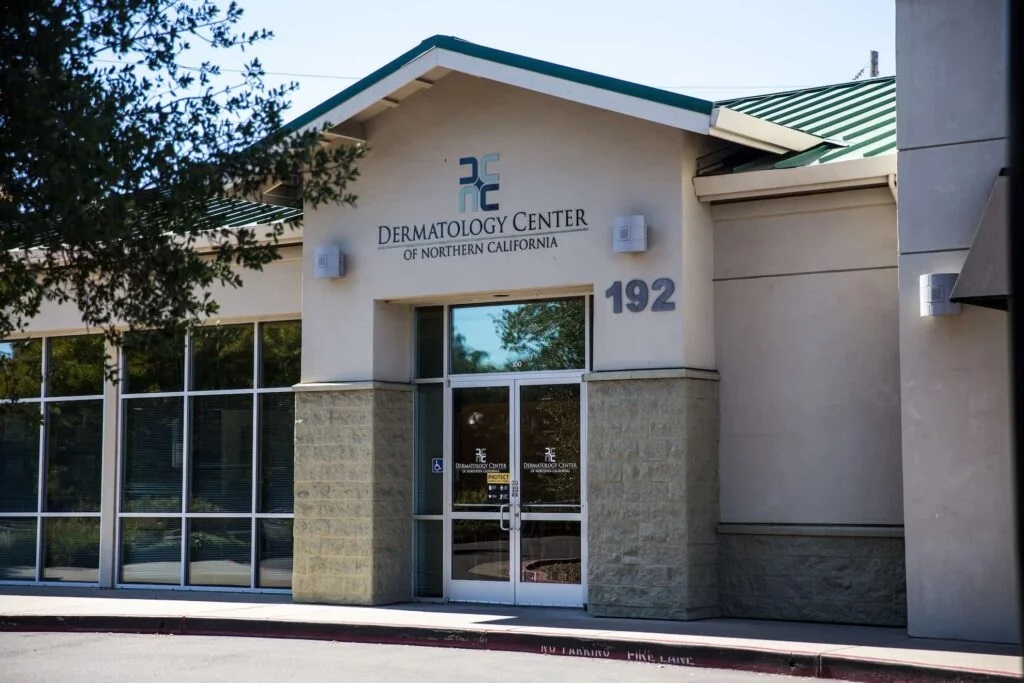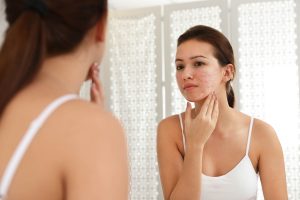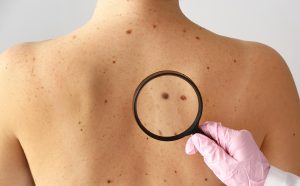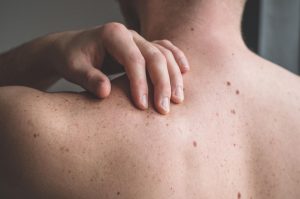As we mature, men and women over 45 may notice the sudden development of new skin lesions on the face and body. What are these things? Sometimes occurring singly, or maybe as multiple spots, these skin growths can be unsightly and often cause concern about their potential for skin cancer.
In this blog post, we will explore many of the common skin growths we experience after age 45. This information is not meant to be a substitute for a thorough, skin examination by a physician, but as an overview of skin lesions that occur commonly, but not exclusively, in middle age.
Seborrheic Keratosis (SK)
This is a pink to dark brown, raised “warty barnacle” felt on the skin’s surface which usually appears in men and women after age 45. Extremely common in both sexes, it is not unusual to have anywhere from one or a few, to a hundred of these lesions. Typically found on the chest and back, SKs can develop anywhere on the body, including the face and scalp. They are usually painless, unless irritated by being inadvertently scratched or rubbed–particularly under tight clothing such as bra straps and waistbands.
If an SK is dark brown in color, it can resemble a malignant melanoma and therefore should be evaluated and diagnosed by a dermatologist. After being reassured that these skin lesions are just benign, unwanted reminders of the aging process (similar to barnacles on an old boat), patients often request removal of SKs for cosmetic purposes. This can be done quickly and easily by a dermatologist. A woman’s tendency to develop this lesion seems to be hereditary and less likely to be a result of sun exposure.
Acrochordons (Skin Tags)
These soft, fleshy skin lesions are most frequently seen in the body fold areas such as the neck, armpits and groin. As we age, and more often when we experience significant weight gain, these skin tags pop up out of nowhere and can be cosmetically embarrassing. Painless skin tags sometimes become entwined in hair or twist on themselves, cutting off their blood supply and leading to sharp and intense pain. Removal of acrochordons is easily performed by a dermatologist.
Lentigos (Freckles) and Melasma
These brown spots and patches develop in sun exposed areas of the skin (face, legs, hands) and are very common in all skin types and colors. As we accumulate more brown spots over a lifetime, this can become a significant cosmetic problem for those who prefer a clear, uniform skin color. Treatment options include topical products applied onto the skin, oral medication, laser therapy and chemical peeling. Depending on your skin type, lifestyle and budget, a dermatologist can help you to formulate a treatment plan to improve this challenging cosmetic skin problem.
Actinic keratosis (precancerous)
These are flaky skin spots that persist for at least two months, without going away, even with daily moisturizer. At first, they are seen as pink, rough spots, no larger than a sesame seed, that eventually become sensitive to touch and even painful over time. Commonly occurring in sun-exposed skin areas such as the entire face and nose, backs of the hands and forearms, and tops of the ears, these precancerous skin growths can develop into a certain aggressive form of skin cancer, known as Squamous Cell Carcinoma. Examination and treatment by a dermatologist is strongly advised. When treated early, you can effectively avoid the development of skin cancer in these lesions.
Dermatofibroma
These are smooth, firm, round skin bumps which are often the result of an insect bite, pimple or ingrown hair. Typically the size of the end of a pencil eraser, dermatofibromas have a unique feature of “dimpling” or sinking into the skin when trying to pick it up or squeeze it with your fingertips. This is essentially a unique type of scar made up of dense collagen and is easily recognized by a dermatologist. No treatment is required.
Sebaceous hyperplasia
Have you noticed the onset of pinkish-yellow bumps on your face that increase in size and become less noticeable during certain times of the month? These tiny cauliflower- like growths are actually oil glands (ie, sebaceous glands) that emerge from deep within facial pores and respond to normal female hormonal changes, specifically androgen stimulation. During menopause, our estrogen levels plummet, allowing our androgens to stimulate the growth of these normal oil glands. Seen in both men and women, they are not cancerous or even precancerous. However, sebaceous hyperplasia can be clinically mistaken for a basal cell skin cancer since they look similar. Examination by a dermatologist is recommended and treatment is simple, if desired.
Skin cancer
It is highly recommended that if you do notice a new skin lesion or one that has changed in size, shape or color, that you visit a board-certified dermatologist to confirm the diagnosis and determine the appropriate treatment, if needed. Discussion of skin cancer is beyond the scope of this post, but as you read above, skin cancer can be difficult to distinguish from benign skin growths. Dermatologists are specifically trained and experienced in diagnosing and treating all types of conditions involving the skin, hair and nails. The American Academy of Dermatology recommends that you see a dermatologist for a yearly total body skin exam to make sure you are skin cancer-free.
